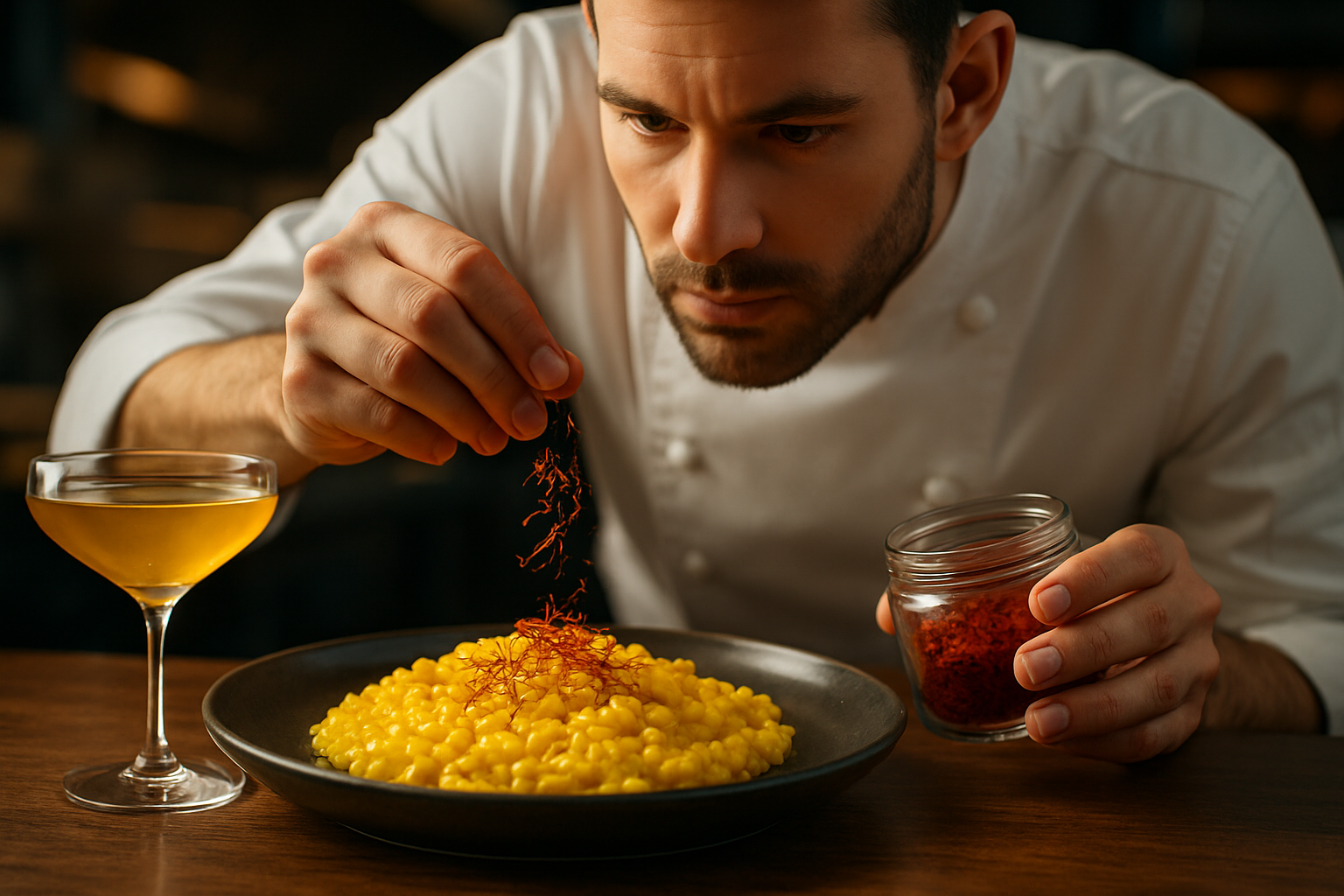Culinary Foam: Elevating Dishes with Airy Textures
Dive into the world of culinary foam, a technique that's transforming traditional dishes into light, airy creations. This innovative approach to cooking adds a whimsical touch to plates, enhancing both flavor and presentation. From savory to sweet, culinary foam is making waves in kitchens around the globe, offering a unique sensory experience for adventurous diners.

From Espuma to Espresso: A Brief History
The concept of culinary foam isn’t entirely new. Traditional dishes like meringues and mousse have long incorporated air to create lighter textures. However, the modern culinary foam revolution began in the 1990s with Spanish chef Ferran Adrià at elBulli restaurant. Adrià’s “espumas” (foams) transformed everything from vegetables to meats into ethereal creations. This technique quickly spread worldwide, inspiring chefs to experiment with textures and presentations. Today, culinary foam has evolved beyond its haute cuisine origins, finding its way into casual dining and even home kitchens.
Flavor Amplification: The Magic of Microbubbles
One of the most intriguing aspects of culinary foam is its ability to intensify flavors. The tiny bubbles in foam increase the surface area of the ingredient, allowing it to cover more of the palate. This results in a more pronounced taste experience, even with smaller quantities of the ingredient. Chefs leverage this property to create dishes where intense flavors burst in the mouth without overwhelming the palate. From delicate herb foams that complement seafood to robust espresso foams crowning desserts, the possibilities for flavor enhancement are endless.
Beyond Aesthetics: Practical Applications
While culinary foam is often associated with visual appeal, its applications extend far beyond mere aesthetics. Foams can add moisture to dishes that might otherwise be dry, making them an excellent tool for balancing textures. They can also serve as a lighter alternative to traditional sauces, reducing the overall calorie content of a dish without sacrificing flavor. In molecular mixology, foams are used to create innovative cocktails, adding new dimensions to classic drinks. The versatility of culinary foam makes it a valuable technique in both sweet and savory applications.
Crafting Foam at Home: Tips and Tricks
Experimenting with culinary foam doesn’t require professional-grade equipment. Home cooks can create simple foams using common kitchen tools. Start with flavored liquids like fruit juices or herb infusions, and use an immersion blender to incorporate air. Adding a small amount of lecithin or gelatin can help stabilize the foam. For those looking to invest in specialized equipment, a cream whipper (siphon) can produce more stable foams with various textures. Remember, the key to successful foam is balancing flavor intensity with the right consistency.
Useful Tips & Facts
• Egg whites are excellent natural foaming agents due to their high protein content.
• Cold liquids generally produce more stable foams than warm ones.
• Fats can inhibit foam formation, so use low-fat or fat-free bases for best results.
• Acidic ingredients like citrus juices can help stabilize foams.
• Foam can be used as a garnish, sauce, or even as a main component of a dish.
• The texture of foam can range from light and airy to dense and creamy, depending on the technique used.
The Future of Culinary Foam
As culinary techniques continue to evolve, the future of foam looks promising. Chefs are exploring new ingredients and methods to create even more innovative textures and flavors. From savory vegetable foams that pack a nutritional punch to dessert foams that melt in the mouth, the possibilities seem endless. As sustainability becomes a growing concern in the culinary world, we may see more chefs using foam techniques to maximize flavor while minimizing ingredient waste. Whether you’re a professional chef or an adventurous home cook, culinary foam offers a fascinating way to explore texture, flavor, and presentation in your culinary creations.





